- Home
- slideshows
- miscellaneous
- Billionaires, costume designers and beer: I spent a day at the Space Symposium and learned about how the tech elite will conquer the final frontier
Billionaires, costume designers and beer: I spent a day at the Space Symposium and learned about how the tech elite will conquer the final frontier
The annual Space Symposium took place earlier this month in Colorado Springs, CO,

While Colorado is famous for its high country (in more ways than one), it has also become the nation's second largest space economy after California. Colorado is home to more than 400 aerospace companies who employ 25,000 private aerospace workers, according to the Colorado Space Coalition.
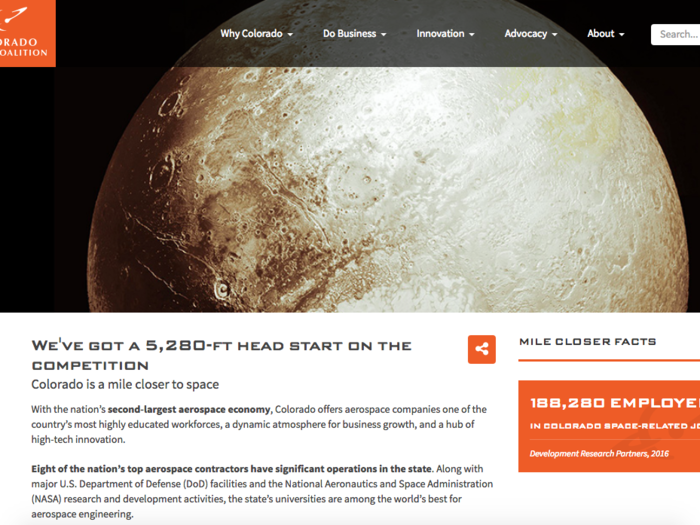
The industry group the Colorado Space Coalition has the cute tagline: one mile closer to space.
In fact, a small airport in Colorado is expected to achieve FAA approval in August to become a space launch port. There are only 10 other space ports in the nation.
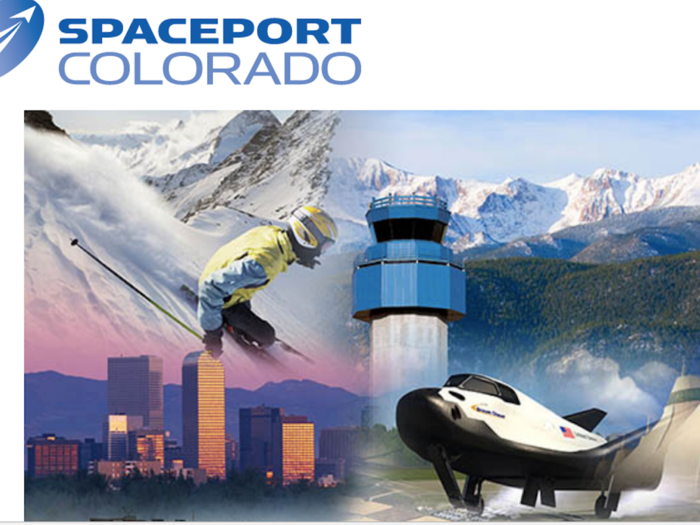
Virgin Galactic, the space company owned by billionaire Richard Branson, is expected to use it as a launch point.
One of the stars of the show was the Dream Chaser spacecraft, built by Sierra Nevada. It is a reusable shuttle that can carry stuff to and from the International Space Station.
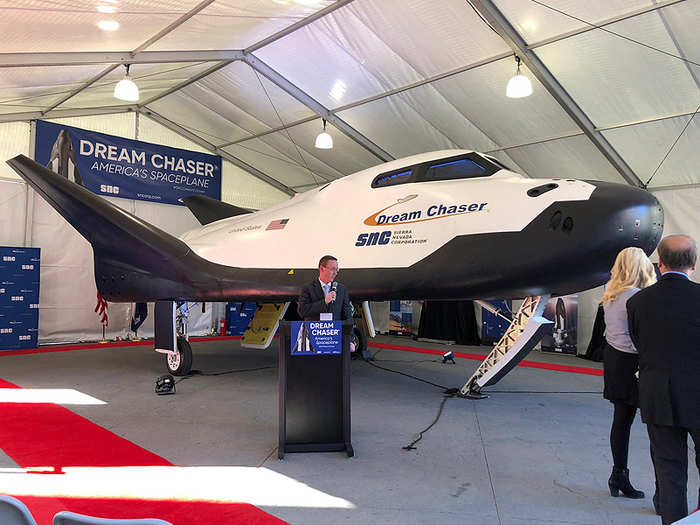
It won a contract to do six trips between 2019 and 2024. In other words: some new competition for SpaceX. Another shuttle, built by Orbital ATK, also won part of the shuttle contract.
Another star of the show was the latest Blue Origin rocket engine. This company was founded by Amazon CEO Jeff Bezos, who is trying to make space travel more affordable.
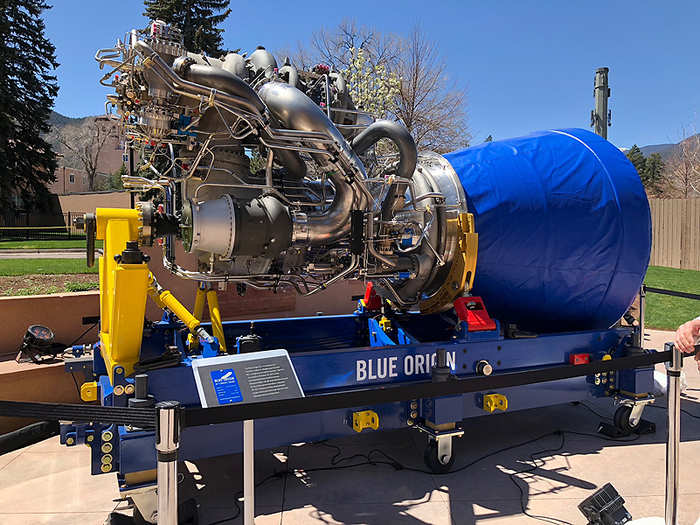
Blue Origin is building reusable rockets for traveling to and from space.
The Blue Origin rocket on display was the latest model, the BE-4.
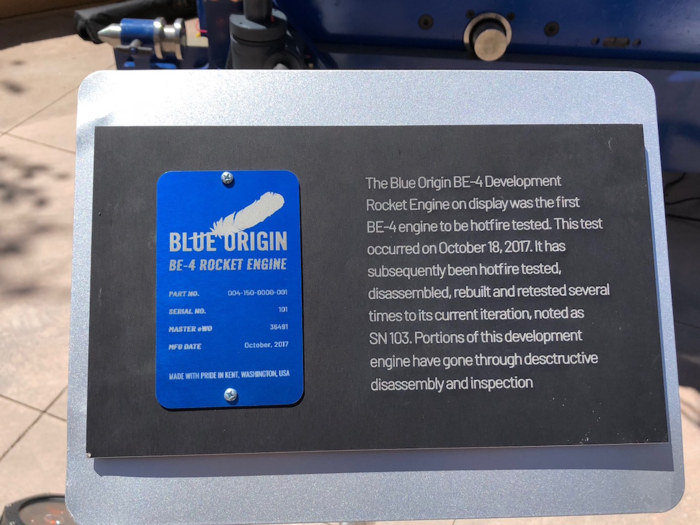
The CEO of Blue Origins spoke at the conference but under a top-secret track that required government clearance to hear the talk.
Gwynne Shotwell, the COO of SpaceX, was also at the show. She spoke at a dinner for new Space Technology Hall of Fame inductees. Everyone was talking about the billionaires making big moves in space, including Jeff Bezos, Elon Musk and Richard Branson.
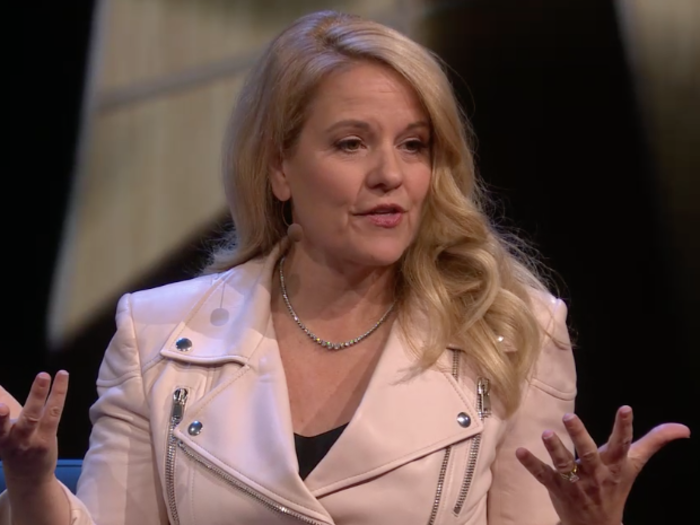
Famous space activist Rick Tumlinson called them the "Billionaire Calvary," and credited them for the exploding venture investment into space companies. Those investments amounted to $3.9 billion last year alone.
This show attracted participation from international space agencies, such as Germany's DLR program.
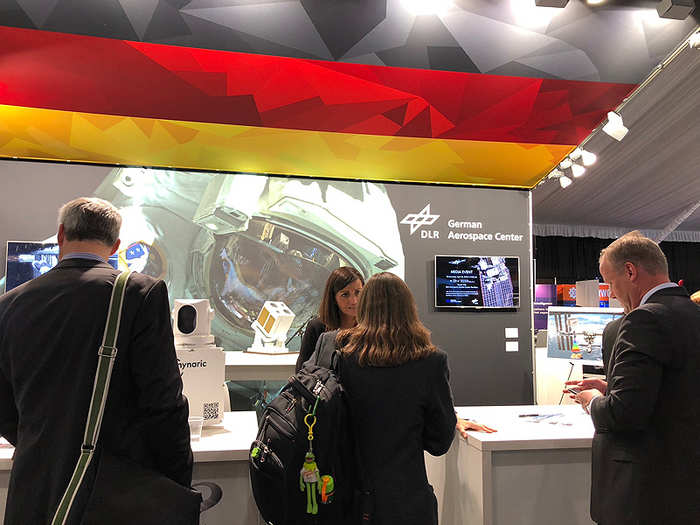
At the show, the DLR was inducted into the Space Hall of Fame for its lasers that can beam data around space, giving internet connectivity to airplanes, satellites, internet balloons and other airborne devices.
Unlike casual dress tech industry conferences, the Space Symposium, composed mostly of military and military contractors, was strictly business dress.
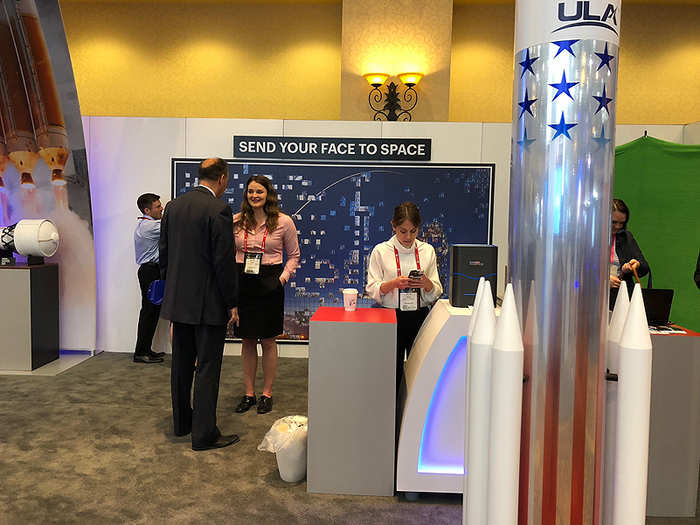
One person told us a story of how a company's technician tried to get onto the show floor to fix something, but were denied entry because they were wearing jeans.
When Vice President Mike Pence spoke, the show organizers told journalists that they would be kicked out if they wore jeans or tennis shoes. They wanted dress slacks, shirt and tie for men, and wanted skirts/blouse, dresses for women, although dress slacks were considered okay, too.
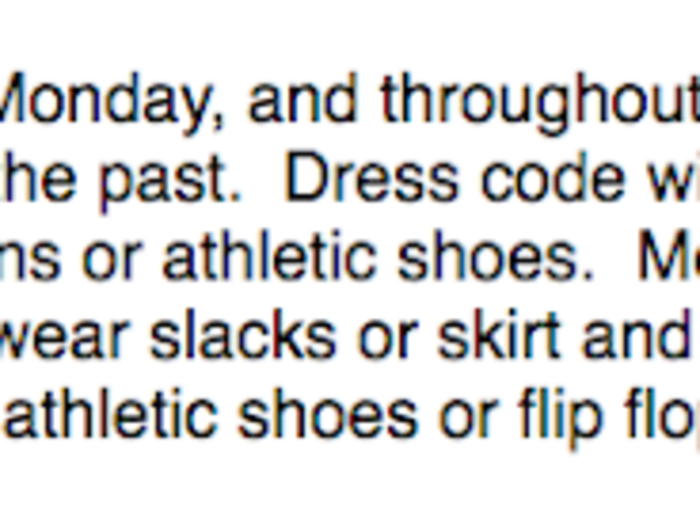
They sent this out in an email. The email also said the Vice President was going to deliver his speech, but would not take questions or do interviews.
The White House published his speech here. In addition to praising the military, NASA and the Trump administration, Pence also mentioned that NASA will be constructing a Lunar Orbital Platform.
NASA later said it will be looking to award contracts for construction of the platform in 2019.
NASA's booth was a highlight too. It featured a contest called the 3D-Printed Habitat Challenge, where NASA is asking people to try and design items astronauts need to live in space. NASA will be giving out a total of $3 million in prize money for winners.
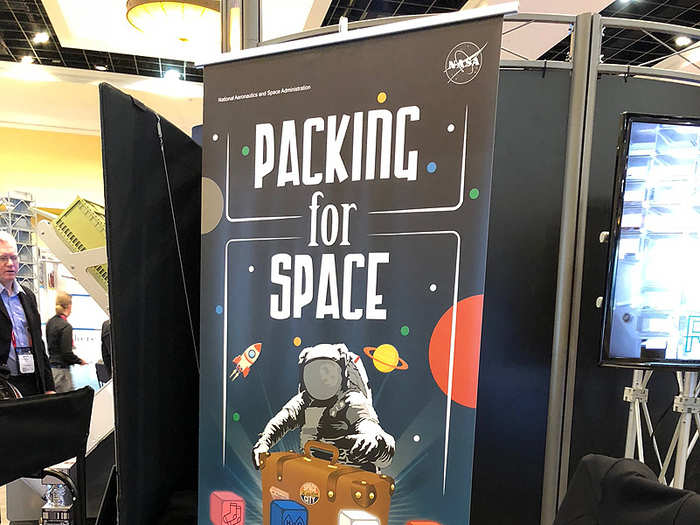
One of the things NASA wants is "sustainable housing solutions" that will use advanced materials and whatever dirt, rocks and the like available on Earth, the moon and Mars.
NASA spokesperson Janet Sudnik told us the story of Ted Southern. He was a Victoria's Secret costume designer. He designed some comfortable gloves for astronauts that won second place and $100,000. He used the money to start up a company, and just won a contract for full space suits.

The company is called Final Frontier Designs. By the way, the first place winner that year was Peter Homer, who won $200,000, went on to win another design contest, and also founded a space suit company. He currently also works for SpaceX.
Two things were everywhere: 1) References to going to Mars, which all the big aerospace companies are working on. Elon Musk even wants to colonize Mars. 2) Virtual reality/augmented reality headsets, which had a presence in many booths.
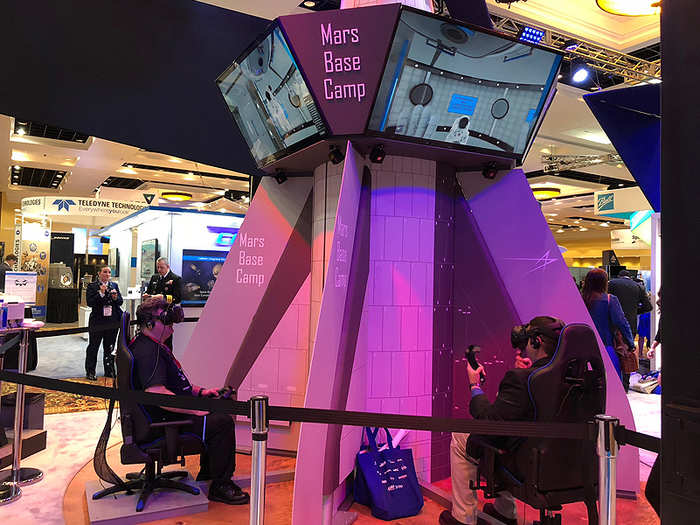
Lockheed Martin, for instance, let showgoers try out this VR demo of what it might be like to go to Mars.
At Boeing, it was the Oculus Rift.
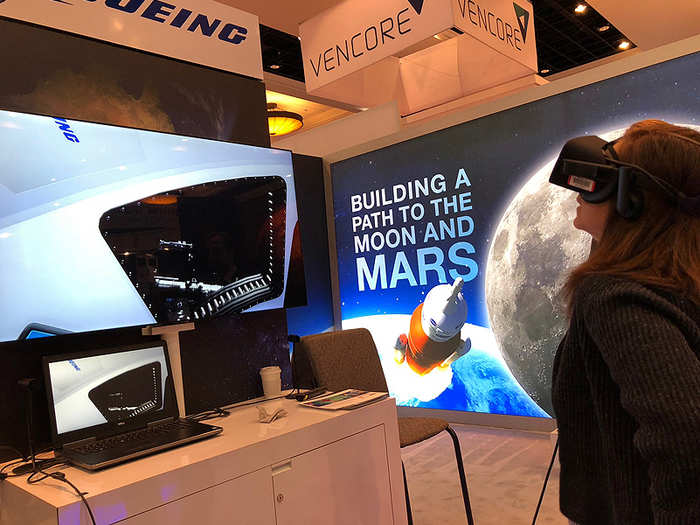
I demoed a training simulation that flew me to the international Space Station.
Microsoft's HoloLens was everywhere, too.
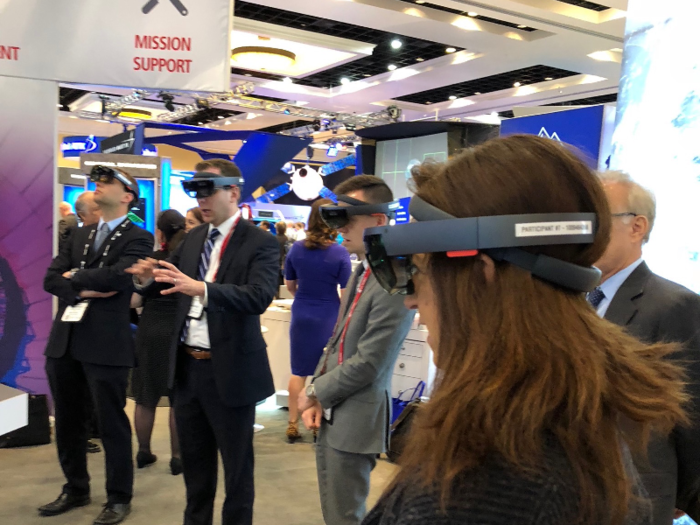
Here I am at the the Raytheon booth, along with a group of appropriately dressed businessmen, using software developed by Charles River Analytics.
The software shows how space management control operators would use the device to track various aircraft on a 3D map.
There were so many HoloLens demos at the show that Microsoft even had a small booth.
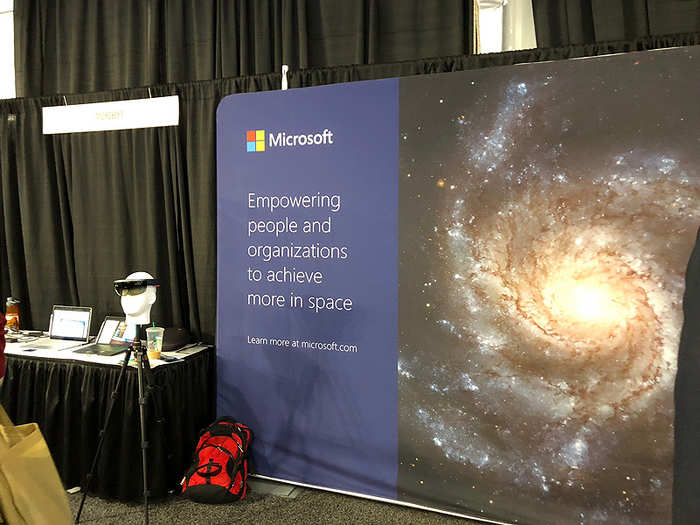
It used the booth to show off the HoloLens goggles.
Of course, the show also had objects from space you could touch, like this meteorite.
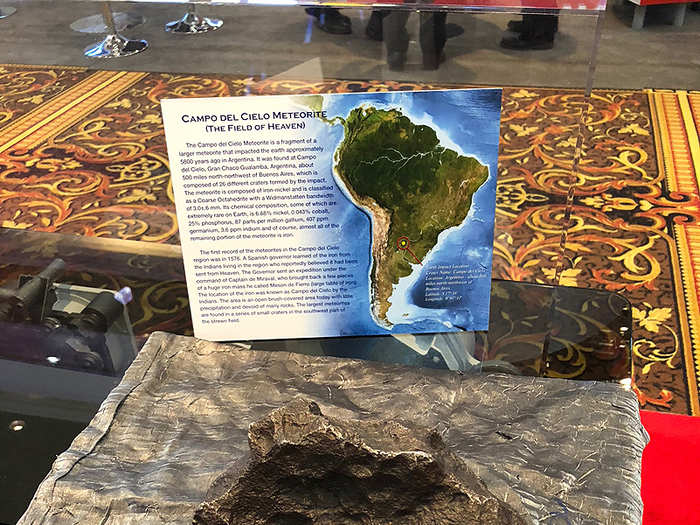
It was heavier than it looked, composed mostly of iron ore. I was told that because this particular iron rock came from space, it cost as much as a car -- at least $35,000.
In the afternoon, I left the conference and drove a few minutes to the Space Foundation, where they have a museum, open to the public, filled with artifacts from space missions.
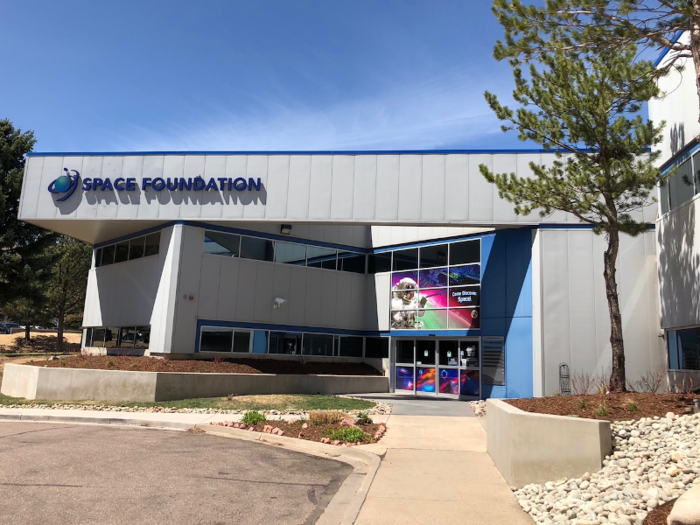
This is a must-see for any science and space lover visiting Colorado Springs.
There are space suits.
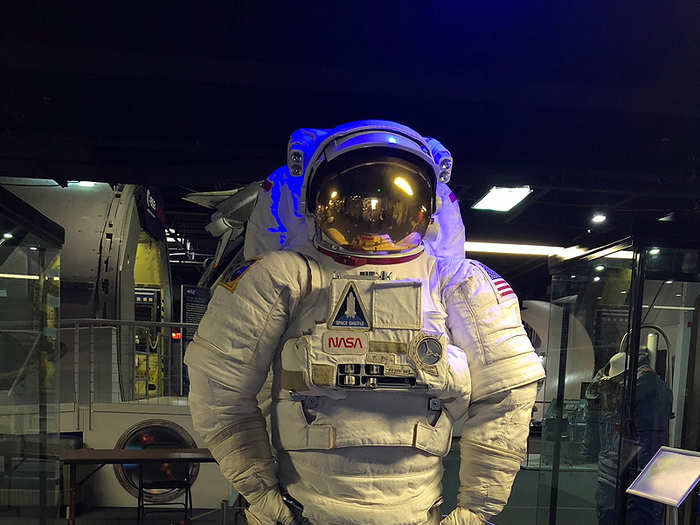
This is, alas, only a replica, of the suit worn in 2007.
But this is the actual space lab used in training astronauts in the 1980's and 1990's.
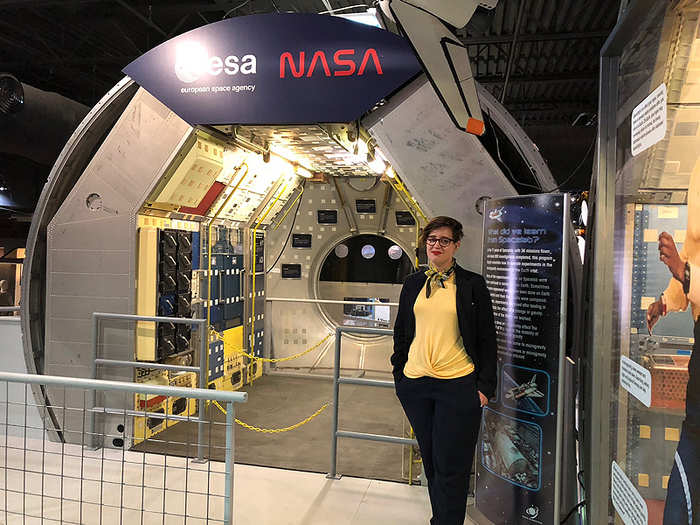
My guide, Rachel English, is the curator of the museum, and she's particularly proud of this exhibit.
But there are dozens of really special pieces on display and lots of educational content for kids and adults to enjoy.
In the back, I found this showcase of all the surprising businesses that have been founded using technology from space.
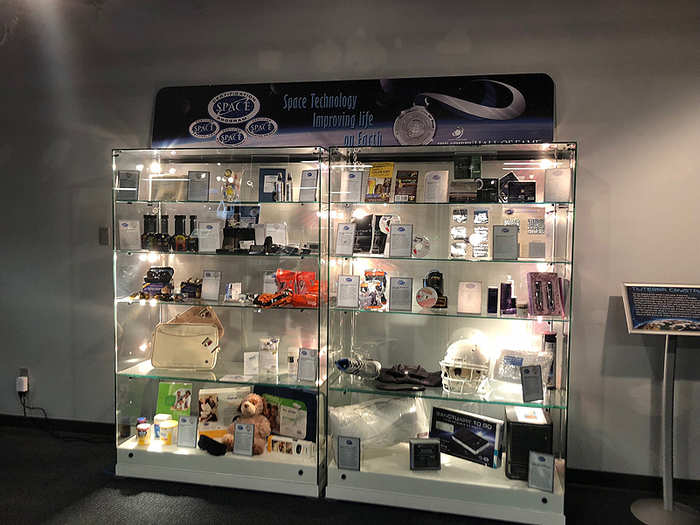
It includes everything from helmets to footwear to toys.
Space technology has led to engine lubricants for earth-bound engines.
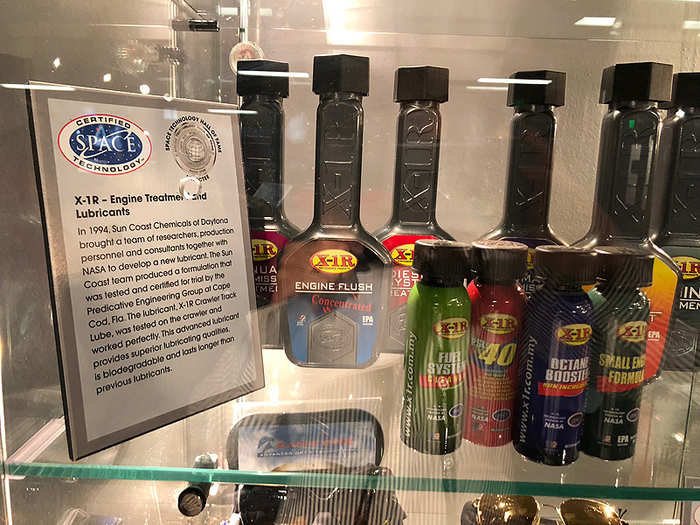
This lubricant was created in conjunction with teams at NASA, and it is said to last longer than traditional varieties. And it's biodegradable, to boot.
This beer-drinker's guide to Colorado (there are a lot of micro-breweries in the state!) used NASA technology, too.
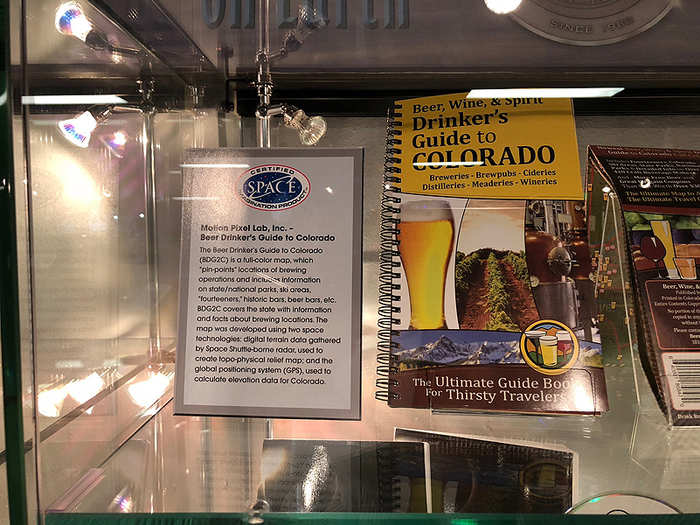
The guide includes a map that was creating using technologies developed for space. Because once you come back from space, the first order of business will be drinking a beer with your buddies.
Popular Right Now
Popular Keywords
Advertisement